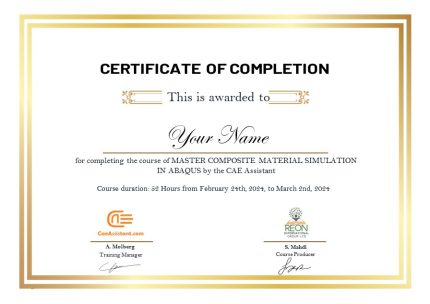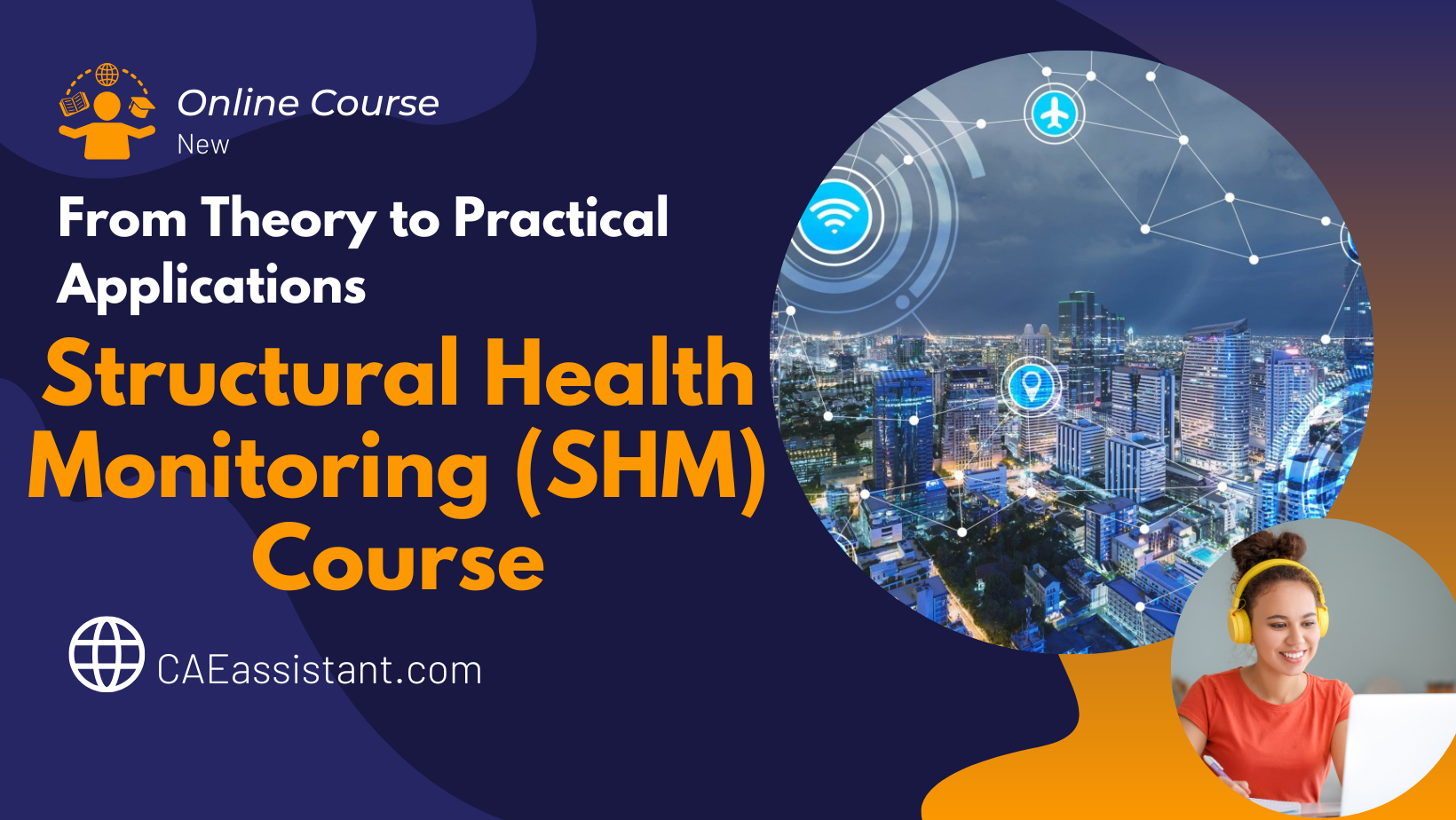Structural Health Monitoring Course: From Theory to Applications
Structural Health Monitoring Course Overview
This Structural Health Monitoring Course provides a comprehensive exploration of techniques used to monitor and evaluate the structural integrity of infrastructure such as bridges, tunnels, and buildings. The curriculum is built to cover both theoretical and practical aspects of Structural Health Monitoring (SHM), making use of advanced concepts in structural dynamics, smart materials, sensor technology, and data processing. The course offers hands-on experience with cutting-edge technologies like machine learning, smart sensors, and advanced signal processing techniques, allowing participants to learn both the scientific foundations and practical applications of SHM systems. Case studies and industry expert insights ensure real-world relevance and applicability, making this course a valuable resource for anyone seeking to enhance their understanding of SHM.
Structural Health Monitoring Course Objectives
In Structural Health Monitoring Course we pursue the objectives below:
- Introduce the fundamental concepts and significance of SHM in civil engineering and infrastructure maintenance.
- Provide a thorough understanding of structural dynamics and its relationship with damage detection.
- Equip participants with knowledge of various smart materials and sensor technologies used in SHM.
- Teach advanced data acquisition, signal processing techniques, and machine learning applications in SHM.
- Familiarize participants with real-world SHM case studies and encourage research in emerging trends and technologies.
Key Features of the Course
The key features of the structural health monitoring course are:
- Comprehensive Content: Covers a wide range of topics, including structural dynamics, sensor technology, data processing, and advanced signal processing methods.
- Practical Applications: Hands-on exercises with simulation tools, case studies from real-world SHM applications, and guest lectures by industry professionals.
- Advanced Techniques: Emphasizes cutting-edge approaches like machine learning for damage detection, wavelet analysis, and the integration of IoT in SHM.
- Industry Relevance: Learn from real-life SHM implementations in critical infrastructure, understanding the challenges and benefits of applying SHM technology in practice.
- Research Focus: Participants will be encouraged to explore future trends in SHM technology, from smart materials to advanced AI techniques.
Course Outcomes
Upon completion of structural health monitoring course, participants will:
- Have an in-depth understanding of SHM principles, smart materials, and advanced sensor technologies.
- Be able to implement various SHM techniques for damage detection and localization in infrastructure.
- Develop the capability to analyze and interpret SHM data using advanced processing methods.
- Understand the role of machine learning and AI in enhancing SHM accuracy and efficiency.
- Be prepared to contribute to the future of SHM through research and innovation in emerging technologies.
This course combines a strong foundation in the theory of SHM with practical, industry-relevant applications, ensuring participants are well-equipped to contribute to the field of structural health monitoring.
- Definition of SHM: Overview of SHM as a method to assess structural integrity over time
- Importance in infrastructure Management: Discuss how SHM contributes to infrastructure safety and longevity
- Challenges in SHM implementation: Explore common obstacles in SHM deployment such as cost, data interpretation, and environmental factors
- Historical development and current trends: Trace the evolution of SHM, from early techniques to current smart systems
- Structural Dynamics Basics: Cover vibration theory, resonance, damping, and natural frequencies
- Modal Analysis and Resonance Analysis: Techniques to determine the dynamic behavior of structures
- Relationship Between Dynamics and SHM: Link between dynamic behavior and damage detection
- Damage-Sensitive Features: Identification of key features that indicate structural damage
- Types of Smart Materials: Explore Piezoelectric, magnetostrictive, and optical fiber sensors, and their applications in SHM
- Working Principles: How these sensors function in detection strain, deformation, and other structural changes
- Advantages and Limitations: Compare sensor technologies based on factors like cost, sensitivity, and longevity
- Methods for Data Acquisition: Sensor placement, calibration, and ensuring accurate data capture.
- Signal Conditioning: Methods to reduce noise and enhance data clarity. Data Processing Techniques: Introduction to filtering, feature extraction, and data analytics.
- Data-Driven Approaches in SHM: Leverage machine learning and statistical models for SHM data interpretation
- Damage Detection Methods: Vibration-based, impedance-based, and wave-based methods.
- Principles and Limitations: Detailed review of each method’s strengths and limitations.
- Localization Techniques: Methods to pinpoint and quantify the location of damage within a structure
- Wavelet Transforms and Hilbert-Huang Transform: Techniques for analyzing non-stationary signals in SHM.
- Machine Learning Algorithms: Applying Al for feature extraction and damage classification.
- Challenges and Benefits: Benefits of automation in SHM vs. challenges in data complexity.
- Real-World Case Studies: Implementation of SHM in bridges, buildings, tunnels, and other infrastructure.
- Challenges and Successes: Lessons learned from SHM applications in different environmental and operational conditions.
- Impact of SHM on Infrastructure Maintenance: SHM’s role in improving safety and reducing maintenance costs
- Current Research Trends: Exploration of innovations like Al integration, big data analytics, and loT in SHM.
- Emerging Technologies: Discuss novel sensor technologies, digital twins, and quantum-based sensors.
- Future Applications and Challenges: Predict future directions in SHM technology and research. Areas for Further Research: Identify critical gaps and potential areas for innovation
Our team of CAE Assistant instructors, renowned experts in their respective domains, will deliver each section of the course, providing you with unparalleled knowledge and insights.
Currently, the course instructor is being finalized, but we are committed to bringing you one of the leading experts in the field. We’re working diligently to ensure that a top researcher will be selected to develop and deliver this course soon.
This structural health monitoring course is ideal for:
- Civil Engineers involved in infrastructure monitoring and maintenance.
- Researchers and students specializing in structural engineering, materials science, or sensor technologies.
- Infrastructure Managers looking to integrate SHM systems for asset management.
- Technologists interested in the application of IoT, AI, and machine learning in SHM.
- Government Officials and Policy Makers focused on infrastructure safety and monitoring strategies.
Finite Element Analysis course Certificate
Upon successful completion of this course, you will receive a course completion certificate. This certificate guarantees your skills with the amount of time spent, skills trained, and can be verified online.

By completing the Structural Health Monitoring course, participants open doors to various specialized career paths. Here are some key job opportunities:
- Structural Health Monitoring Engineer
Design and implement SHM systems to monitor the safety of infrastructure like bridges, tunnels, and buildings, using sensors and advanced data analysis. - Data Analyst/Engineer in SHM
Focus on interpreting and analyzing SHM data using techniques such as signal processing, machine learning, and AI to detect damage and predict maintenance needs. - Sensor and Smart Materials Specialist
Develop and integrate smart materials and sensors for real-time infrastructure monitoring, ensuring high accuracy and durability. - Infrastructure Maintenance Manager
Oversee maintenance operations for critical infrastructure, utilizing SHM data to prioritize repairs and optimize maintenance schedules. -
Researcher/Consultant in SHM Technologies
Contribute to innovation by researching emerging SHM trends, from AI-driven monitoring to IoT-based infrastructure health systems, and provide expert consultation.
First Session for Free!



